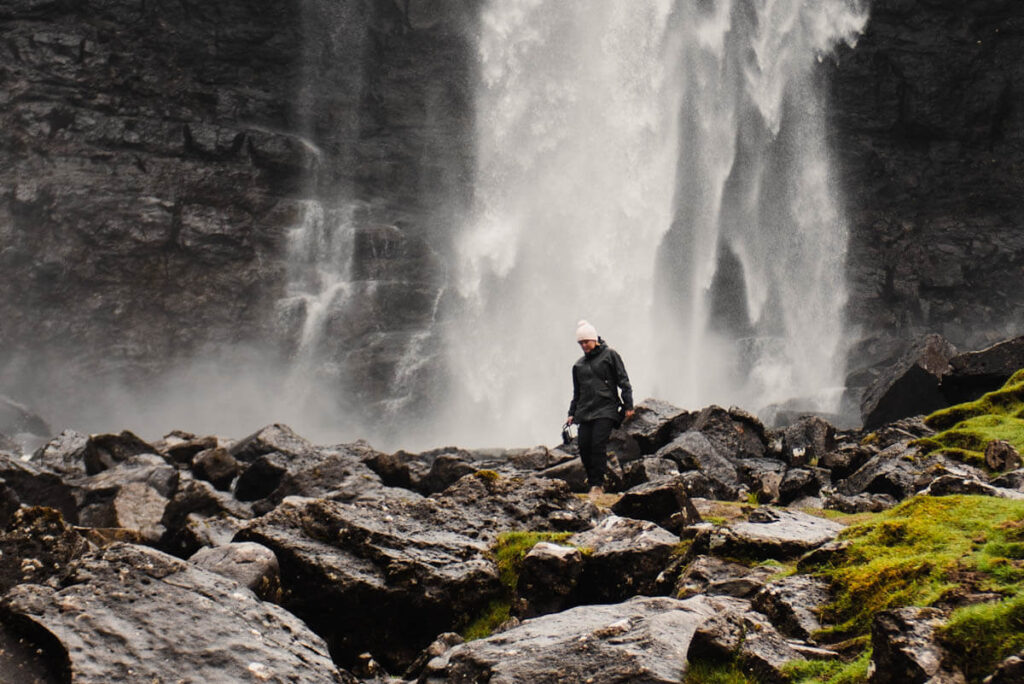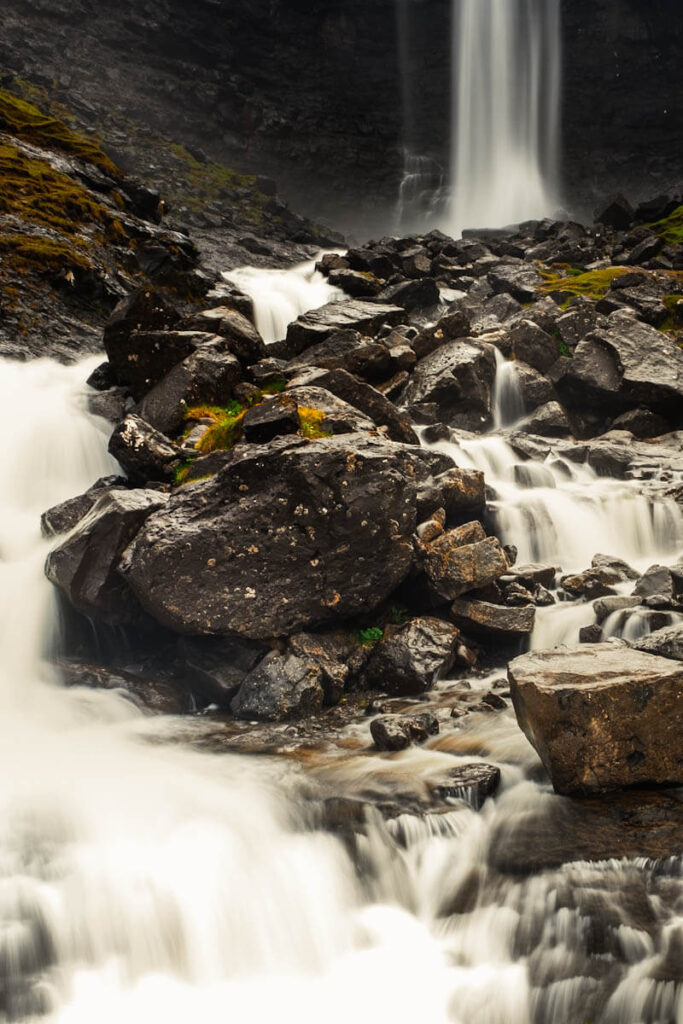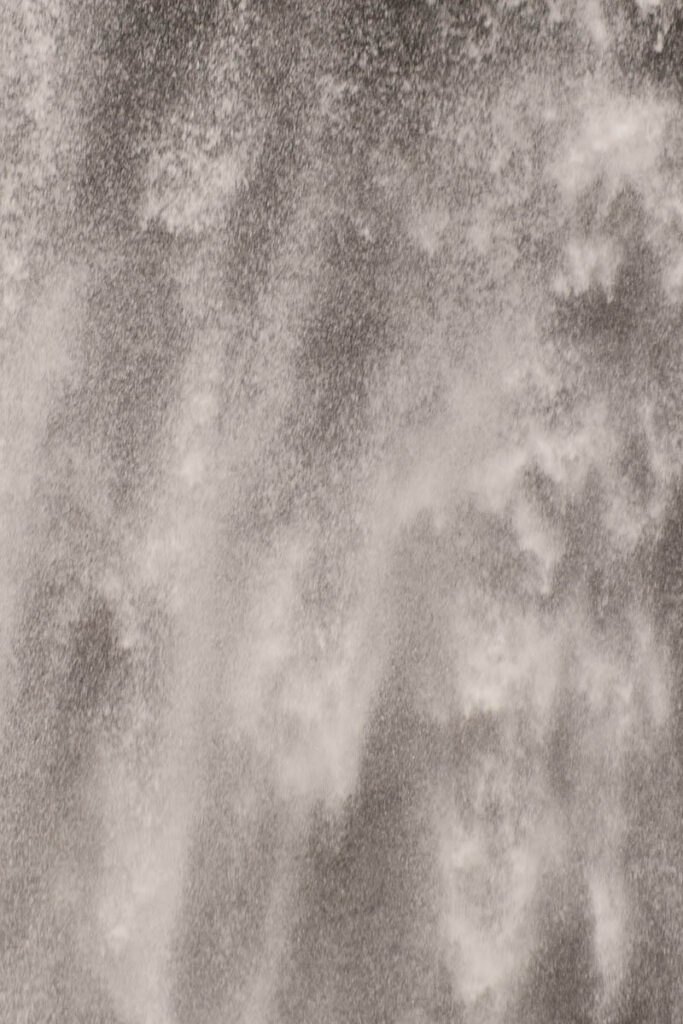Fossá is the highest waterfall in the Faroe Islands and one of the most impressive natural sights in this remote archipelago. The waterfall is located right along the road (road 594), near the village of Haldarsvík. It’s a must-see attraction on the island of Streymoy.
Fossá: tall, wild and easily accessible
The water of Fossá plunges down in two large tiers, falling around 140 metres. On a rainy day, the waterfall swells and becomes even more spectacular. The name Fossá literally means ‘river with a waterfall’ in Faroese, which shows just how deeply waterfalls are woven into the islands’ landscape. The width of the Fossá waterfall varies depending on rainfall. During heavy rain, the waterfall spreads out as the water flows down a wider surface. On average, Fossá is about 30 metres wide at the main drop, but in drier periods, the width can decrease significantly.
where exactly is fossá waterfall located?
The waterfall lies right along road 594, the road to Tjørnuvík. It’s an ideal stop when you’re heading to this northernmost village on the island of Streymoy. You can spot the waterfall from a distance and there’s a small parking area where you can leave your car. In front of the waterfall, you’ll find many boulders you can climb to get a bit closer. Do so with great caution, as the rocks can be extremely slippery. If you’re planning to photograph the waterfall, getting too close may not always be the best idea—spray from the falls can become a real issue.

Viewing Fossá waterfall from a different angle
From road 62 on the neighbouring island of Eysturoy, on the opposite side of the 37-kilometre-long Sundini Strait, you get a great view of Fossá from a distance. From here, you might even see more clearly how the waterfall is surrounded by dramatic cliffs. The rock beneath the Fossá waterfall consists mainly of basalt; a dark, volcanic rock formed millions of years ago by lava flows. The Faroe Islands are of volcanic origin and are largely made up of successive layers of basalt, interspersed with softer layers of tuff.
Centuries of erosion by wind and water have carved into the basalt beneath Fossá, creating the distinctive stepped structure of the waterfall. This hard rock keeps the waterfall relatively stable, even as the water slowly sculpts patterns into the stone over time.
Basalt naturally has a dark, almost black colour. But due to the constant flow of water and the damp conditions, moss and algae often grow on the rocks, giving parts of them a greenish hue. This gives the waterfall a mystical and dramatic appearance, especially in wet weather. It’s something you’ll notice all across the Faroe Islands.


When is Fossá at its most impressive?
Fossá is at its most breathtaking during or just after heavy rainfall. The waterfall swells, crashes down with immense force and envelops the surroundings in a fine mist. This creates a mystical, almost fairytale-like scene. If it stays dry for a few days, Fossá can shrink to a modest trickle. Want to experience the highest waterfall in the Faroe Islands at its wildest? Then try to visit on a soaking wet day… if possible, of course!
Exploring the Faroe Islands with a rental car
This island group is the perfect destination to explore by rental car. Most islands are connected by tunnels and only a few still require a ferry to reach. Renting a car is by far the best way to get around and discover the rugged beauty of the Faroe Islands at your own pace. It’s a hassle-free way to travel. Especially if you book with a provider that includes full insurance, so you’re fully covered and can hit the road with peace of mind.
